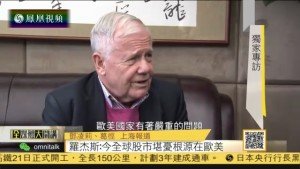The actions of the police commander who led the operation to quell the violence in Little India on Dec 8 were the subject of a fiery debate yesterday as the hearing into the unrest resumed.
The Committee of Inquiry (COI) pulled no punches as it grilled Deputy Assistant Commissioner Lu Yeow Lim for more than four hours on the witness stand.
BY FRANCIS CHAN ASSISTANT NEWS EDITOR
The actions of the police commander who led the operation to quell the violence in Little India on Dec 8 were the subject of a fiery debate yesterday as the hearing into the unrest resumed.
The Committee of Inquiry (COI) pulled no punches as it grilled Deputy Assistant Commissioner Lu Yeow Lim for more than four hours on the witness stand.
One issue it raised with DAC Lu was his claim that his men were outnumbered by the mob. “Let me ask you again. At the time you arrived, the record says 130 men were on the ground. Car flipped over,” said COI member Tee Tua Ba.
“That is not the correct assumption,” said DAC Lu, correcting Mr Tee, who is a former commissioner of police.
Although the inquiry had been presented with evidence that showed there were 111 police officers on the ground that night, only 47 were dealing directly with the riot, said DAC Lu.
Most of these officers were also scattered across an area the size of “three football fields”, he added. Of the remaining 64 officers, 30 were controlling traffic, 22 were unarmed plainclothes officers, seven were injured and another five were “around the area”.
All he had at his disposal were 11 police officers, of which only eight were armed with revolvers and T-batons, said DAC Lu.
The 11 men, who included himself, were also facing two sections of rioters – on one side a group of about 50, and on the other in Race Course Road, rioters “in the hundreds”.
Mr Tee also took issue with DAC Lu’s strategy of “holding the line” to wait for riot control troops from the Special Operations Command to arrive before engaging the unruly mob. A Traffic Police sergeant had given testimony that he had charged at some rioters earlier that night and a Certis Cisco officer had even “caught” four men, he noted.
Mr Tee also quoted a British parliamentary report on the 2011 London Riots which concluded that holding back police action would only embolden rioters.
DAC Lu, however, disagreed. Quoting from the same report, he said: “I have read the report… The conclusion was not that the tactic did not work, it was that numbers matter. Sufficient numbers were the key to the issue.”
Mr Tee had also asked why DAC Lu was not aware that police vehicles were being set on fire even though he had “command and control” of the scene.
DAC Lu explained that his line of sight was blocked by the bus, which was involved in the fatal accident that sparked the riot.
He said he also had difficulties communicating with other officers because the radio airwaves were jammed and hence he did not have an idea of how many of his men were at the scene or where they were located initially.
“As a commander, the first thing you want to know is how many men you have on the ground,” said Mr Tee. “You didn’t know how many men were on the ground?”
The 48-year-old senior police officer seemed beleaguered at various points yesterday as the committee peppered him with questions, often cutting him off as he tried to answer.
At times, he gave as good as he got, asking at one point: “Is the COI using information gathered over the last three months to evaluate my actions on that night?”
At another, Mr Tee asked him: “Was it a failure of you, or a failure of the whole system?”
DAC Lu replied: “Is the honourable member asking for an opinion or asking a question?”
Pressed on the inaction of his men, he said: “These are not two armies facing off, it was like fighting an insurgency so even if we wanted to shoot, shoot who?
“Stones were coming from behind people in the crowd,” he added. “This would have been a totally different COI, asking different questions… (such as) why did you shoot without a clear line of sight?”
The commander of Tanglin Police Division added that if his men had opened fire and shot or killed one of the rioters, “the sentiments would have been inflamed”.
“They might have set fire to a building, or attacked people. So my guiding principle that night: Where possible, do not escalate the situation, do no use force unless there is no choice, even if we’re legally right in shooting.”
franchan@sph.com.sg

DAC Lu faced intense questioning on the witness stand. He seemed beleaguered at various points, but at times he gave as good as he got. He said his guiding principle that night was not to use force unless there was no choice. — ST PHOTO: WONG KWAI CHOW –
BACKGROUND STORY
HOW MANY OFFICERS WERE ON THE GROUND?
Deputy Assistant Commissioner (DAC) of Police Lu Yeow Lim (LYL) faced off with Committee of Inquiry member Tee Tua Ba (TTB) over the actual number of police officers on the ground.
TTB: As a commander, the first thing you want to know is how many men you have on the ground. You didn’t know how many men were on the ground?
LYL: No, but that was the first question I asked when I reached the ground.
TTB: So was it a failure of you or a failure of the whole system?
LYL: Is the honourable member asking for an opinion or asking a question?
WERE YOU AWARE OF THE SITUATION?
Was DAC Lu aware of the situation on the ground, asked Mr Tee and committee chairman G. Pannir Selvam (GPS).
TTB: You were not waiting 10 minutes, you were waiting more than half an hour, and you said that five minutes, even five seconds is a long time… All this was happening and you said you did not know. Then I don’t think you are aware of the situation on the ground.
GPS: You did not know because you chose not to know.
LYL: That is not correct, sir. If the few of us had gone in and taken a walk… my officers would be walking into a crowd. If you think of the tactics of a commander – to lead his only reserves to find out what was happening – are you trying to make the situation worse?
GPS: That is your imagination, not reality.
LYL: The fact is, this is all conjecture… There is nothing superior about one conjecture or the other. I had very reasonable belief that if I moved to engage, they would surround us.
TTB: Let’s put it this way. For half an hour, you were there holding the line. You must look at it from the perception of the rioters.
LYL: I think the COI has rejected the fact that, how do you not make it worse?
TTB: You have somehow made it worse by not taking any action.
LYL: No, it might have precipitated the discharge of firearms.
TTB: You don’t know means there must be something wrong with the system.
DID YOU READ THE CROWD WRONGLY?
The committee compared DAC Lu’s account to that of video evidence.
TTB: We believe that you have read the crowd wrongly.
GPS: The video I see paints a very different picture from what you tell us.
LYL: Again the committee is using videos…
GPS: That’s because you brought up a video.
LYL: The assertion is that I read the crowd wrongly, made the wrong judgment based on the video.
My counter assertion is, I have not seen the video that night, so that information is not available to me.
Now, three months after the riot… it is used to evaluate my decision making on the night of the riot, when I did not have that information.
TTB: Your whole contention is, if you move forward, you’ll be overwhelmed, your guns would have been taken from you…
LYL: It is with the benefit of hindsight… I did not see the video that night, I did not have the benefit of hindsight.
What I saw were hundreds of people overturning vehicles. Everything I saw suggested that if we had engaged them, they would have struck back.
The committee is now using the video clip to say we read the crowd wrongly. I read the crowd the way I saw it that night, without the benefit of the video.
转载自:http://www.straitstimes.com/
Published on Mar 5, 2014 8:00PM


